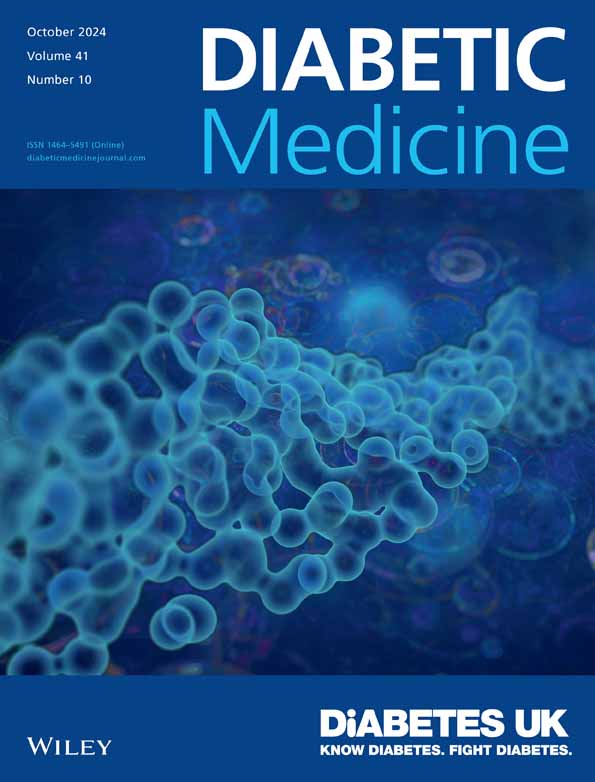Continuous glucose monitoring remote monitoring does not meet the needs of all adult users: A qualitative study of adults with type 1 diabetes who do not use remote monitoring
Abstract
Aims
Continuous glucose monitoring (CGM) is increasingly popular in the management of type 1 diabetes (T1D). These devices have a remote monitoring function that allows for a third-party individual to monitor the user's glucose levels. While remote monitoring in CGM devices is widely used in T1D management, especially in paediatric populations, there are some individuals with T1D that do not utilise this function. This study aimed to explore the reasons behind some adults not using the remote following function on their real-time CGM (rtCGM) devices.
Methods
Adults with T1D who had been using rtCGM without the remote monitoring function were invited to participate in a semi-structured interview. Interviews explored the participants' experiences using CGM and their reasons on why remote monitoring was not for them. Interviews were analysed thematically.
Results
Interviews were conducted with fifteen people with T1D. Mean age was 27.3 years ± 9.34 SD. Thematic analysis identified three remote monitoring themes: (1) anxiety/concern regarding sharing data; (2) independence with diabetes management; and (3) desire for more customised sharing. There was a universal appeal of the efficacy, ease and practicality of glucose management with CGM devices among participants, particularly when compared to their past experiences with finger-prick testing.
Conclusions
Remote monitoring can be a valuable complement to CGM, but it may not appeal to all individuals with T1D, particularly some adults. These findings offer insights for healthcare teams and provide feedback to help CGM manufacturers develop a more customised remote monitoring experience. Some users clearly wish to prioritise privacy and autonomy while still gaining a safety net in critical situations.

 求助内容:
求助内容: 应助结果提醒方式:
应助结果提醒方式:


